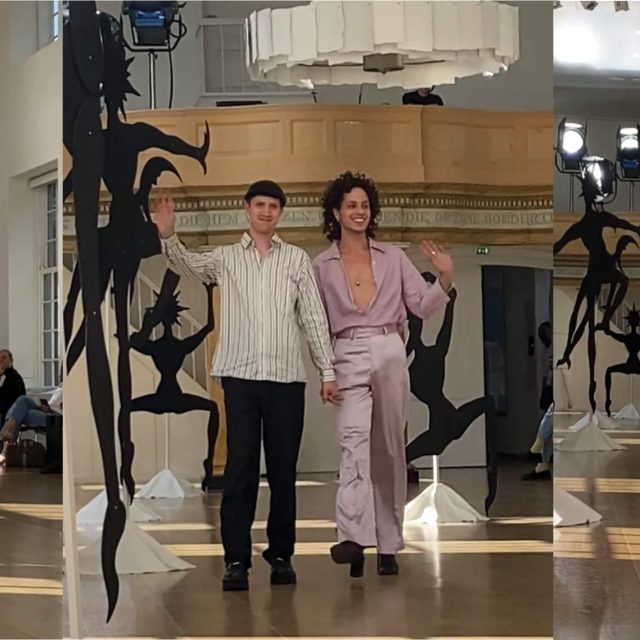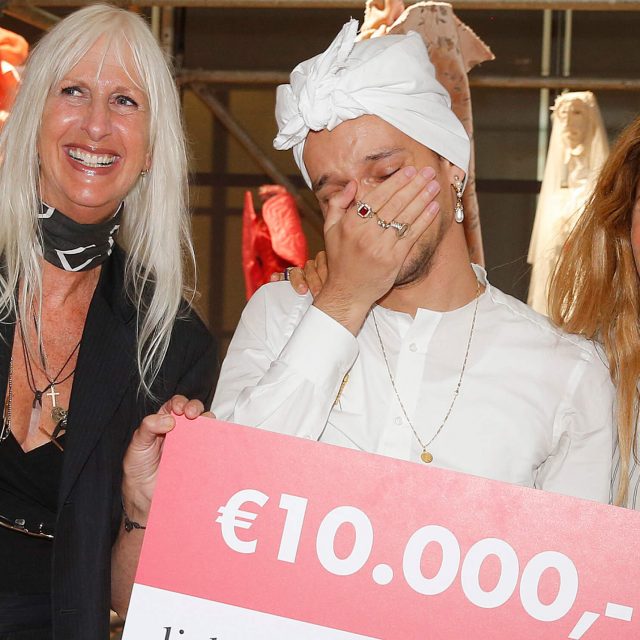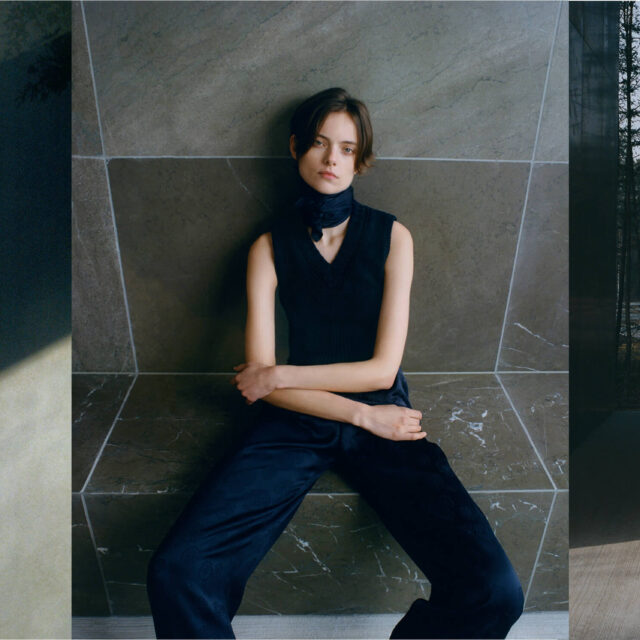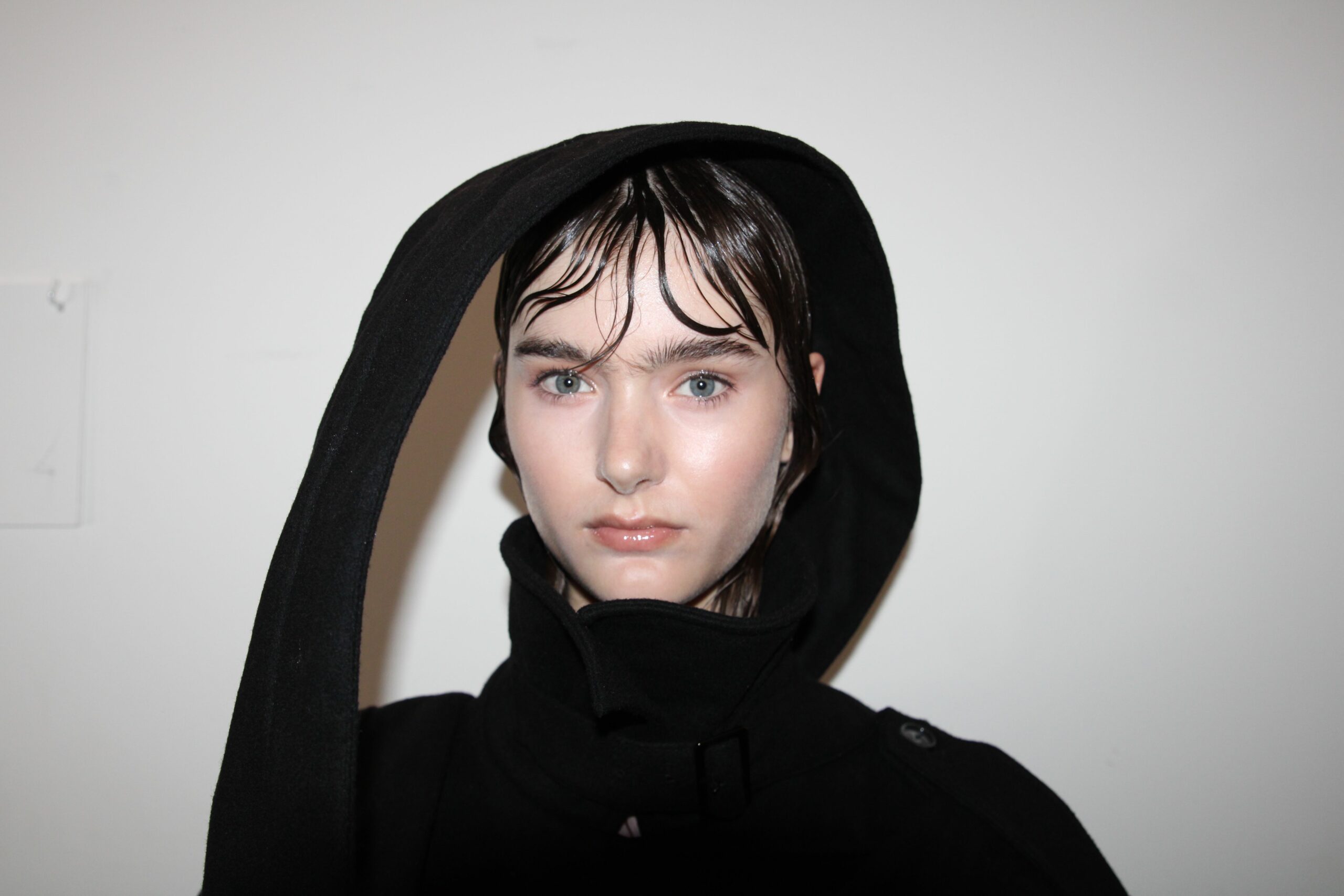After receiving an abundant amount of open call applications, the Lichting jury announced their selection of 10 final candidates that will be competing against each other for the Lichting 2023 title. Before their debut to the public during Amsterdam Fashion Week Edition 2023, AFW sat down with each participant to talk about their collection and their plans for the upcoming Lichting show. This week we would like to introduce you to Bastiaan Reijnen.
Can you tell me something about yourself and your trajectory as a fashion student?
Hi, my name is Bastiaan Reijnen and I’m a 23-year-old designer from Central Limburg. The trajectory of developing my interests might sound surprising compared to others, as when I was little, I never had any interest in fashion. I was always interested in biology and would either spend my time in the forest collecting insects, or locking myself up in my room and drawing late into the night. Eventually, my interests started to shift due to me investing more energy into high level Judo and having to juggle training with high school. This led me to take a step back from creating because my former environment never truly convinced me that creativity could bring me security in life. After years of living this sort of lifestyle, I was late-diagnosed with Pfeiffer’s disease, which resulted in me ending up with a burnout at 16 years old. I wasn’t able to graduate high school and stopped competing on a high level of Judo. The aftermath seemed to never end and nothing could motivate my mental or physical self anymore. Fortunately, I found some of my old sketchbooks and started drawing and painting again. To my surprise it shined a bright light into my life at the time. I realised that in order to stay healthy, I would need to be able to create and express myself, which led to my interest in fashion at 18 years old. I discovered that garments can make you part of a social group or subculture which really sparked my interest. I started to become more affiliated with subcultures like the Dutch Gabber culture, but also fashion influences like counterfeit clothing and their defects. This in combination with the discovery of artists like Charles Fréger and my interest in nature and archetype studies really shaped my original interest in fashion.
How did the concept of your graduation collection come to being?
When I was about 12 years old, my grandfather sat me down to tell me his life story. He wanted me to know where we came from and said that family heritage is something that should be remembered. The story was about growing up in a household of 6 kids with an early deceased mother, and a mine-working father in the south of Limburg. He still describes the noise of squeaking dust lungs coming home after the underground shifts. His uncle was a shoe maker and poacher of small birds. Besides this, he told me about his time of service in Middelburg and the struggle of having a “Limburgian” accent outside of Limburg. Even after all that happened, he still loved the experience and discipline derived from his time of service. These stories have never left my mind. Eventually, my graduation year came along and there wasn’t any doubt that I wanted to visualise my heritage in the collection. I wanted to merge my own heritage with Limburg’s provincial heritage by searching for Limburgian folklore. I stumbled upon the folklore legend of the “Bokkenrijders”, which turned out to be mainly located in the area my grandfather grew up. When I discovered this fact, the whole concept came together and I started to recreate the Bokkenrijders by creating rough character designs per garment of function in the bandit group, basing those characters on personally relevant Limburgian figures. These figures range from being based on my own family, friends, the legend of Christiaan Hese and books about the legend of the Bokkenrijders. In addition, I did archetypical garment research to connect them to characters in their cut, functionality and aesthetic.
What important themes do you address with your collection?
The purpose of the collection (vót’tetèsj) is to show clothes that deserve to exist forever and will not be discarded after a few wears, while still being artisanal. I have challenged myself to be self-sustaining in the sense that I want to make every- and anything myself. I went back to the basics, aiming to show Dutch craftsmanship that really delivers quality as a response to today’s fashion standards. I feel like the practice of fashion design is mainly focused on portraying unrealistic standards of supposed high-valued lifestyles. High-fashion brands have opted to present an aesthetic and lifestyle which is so-called desirable, dismissing any moral standards in regards to issues of sustainability and inclusivity. Most luxury brands buy into this idea of novelty, creating pieces that are “unique or one of a kind” and create thousands of the exact same garment, which, in my opinion, are branding-based consumerist obsessions. As a result, the quality of the piece does not matter compared to the status of the brand. Vót’tetèsj is about product development, craftsmanship and creating longevity and love for the garments we make and own. It strives to show that investing in quality will give joy for a lifetime and not just for a season.
How would you describe your signature as a designer? How does this reflect in your collection?
As a designer, I focus on archetypical research. There is always a reference in cut or detailing to the original garment. The designs are about finding respectable flaws in my (army – workwear) archive and exploring ways to merge different elements to create something new. I often draft the patterns from the original garment to then adapt it or make a hybrid design. besides this, I like to work with discarded materials and see what juxtaposes the rough workwear fabrics and cuts with colourful patchwork/embroidery, which is seen throughout the whole collection.
I like to work with discarded materials in any sense and challenge myself to see what I can do to extend their life. Often, we don’t realise the quality of the materials we have laying around but on the other hand there is also a lot of literal trash. Although this doesn’t mean this ‘trash’ has no future. For example, I embroidered a cyclist cap due to its low craftsmanship and awkward fit to save it from the bins. There is a sleeveless top in my collection which consists of stove wicks that I found lying around in a puddle of water at an antique market and mended the pieces together by hand. I want to enhance the status of garments with a little bit of love and attention and combine these with workwear elements that will last a lifetime, thus creating a new luxury to my liking.
Which piece from the collection are you most proud of? Why?
it’s quite hard for me to decide on my favourite item due to the collection being a mixture of different elements. I am very fond of my Sashiko coat. For me the process was really the most interesting. The coat (originally Hugo Boss) was donated to me by the Salvation Army of Maastricht due to one single moth bite in the coat. I decided to play with the local status of the brand and buried it in my grandfather’s garden, making it a garment that has literally been designed on and by Limburgian ground. After about 5 months in the ground, I began the reparation process, eventually restoring it by enhancing the beauty of the decayed fabric. The amount of handwork and hand finishing eventually made the coat exceed its original status even after being “discarded”. On the other hand, I really like my cargo pants because the process was the exact opposite. Here, I really focused on developing the fit and proportions of the garment while referencing my hometown and the muscle deformities in suburban meat cattle. I’d say the pants are my favourite if I look at my designs but the coat is my favourite if I look at myself as an artist.
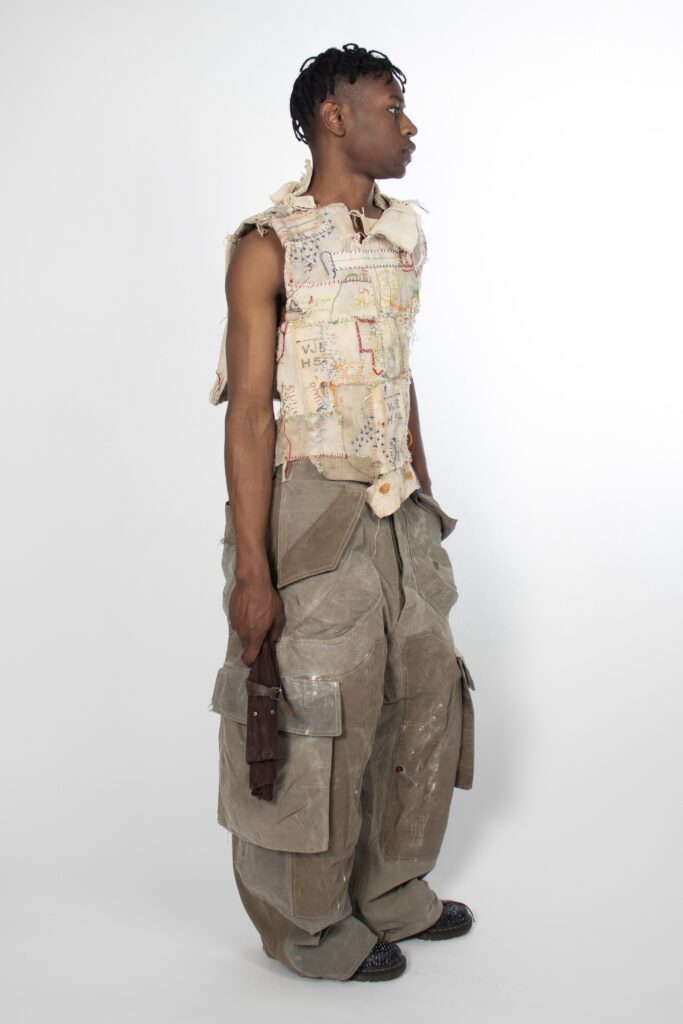
What would be the ideal way to present your collection to the public in September? Can you already say something about what you currently have in mind?
I want to show the fun hysterical energy of Limburgian carnival in a sophisticated way and show the world that the south of the Netherlands is a design and craftsmanship force to be reckoned with. My aim is to show that Limburg can and should coexist with the rest of the Netherlands and this will even be shown in my music on the runway.


